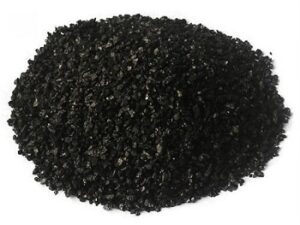Description
Activated Carbon: A Powerful Tool in the Fight Against Mercury Pollution
Mercury, a heavy metal known for its toxicity, poses a significant threat to both human health and the environment. From industrial processes to natural sources, mercury contaminates water, air, and soil, ultimately finding its way into the food chain, particularly impacting aquatic ecosystems. Fortunately, a versatile and effective solution exists for removing mercury from various sources: activated carbon.
Activated carbon, a highly porous form of carbon processed to have a large surface area available for adsorption, has proven to be a valuable tool in mitigating mercury pollution. Its unique properties allow it to effectively capture mercury ions and compounds, preventing their spread and minimizing their harmful effects.
How Activated Carbon Works in Mercury Removal:
The effectiveness of activated carbon stems from its massive surface area, often exceeding 500 m²/g, and its ability to be modified for specific applications. The process of mercury removal using activated carbon involves:
- Adsorption: Mercury ions and compounds are attracted to the surface of the activated carbon.
- Physical Interactions: Van der Waals forces and other physical attractions help to hold the mercury on the surface.
- Chemical Interactions (Optional): In some cases, the activated carbon can be chemically treated (impregnated) with substances like sulfur or halogens to enhance its capacity to bind mercury chemically. This allows for stronger and more specific binding.
Applications of Activated Carbon for Mercury Removal:
Activated carbon finds application in a wide range of industries and contexts where mercury contamination is a concern:
- Industrial Wastewater Treatment: Many industrial processes, such as those involved in chlor-alkali production, mining, and metallurgy, generate wastewater containing mercury. Activated carbon filtration systems effectively remove mercury from these effluents before they are discharged into the environment.
- Flue Gas Treatment: Mercury released during coal combustion in power plants and other industrial facilities can be captured using activated carbon injection systems. The activated carbon adsorbs the mercury from the flue gas, preventing it from being released into the atmosphere.
- Water Purification: Activated carbon filters are used in potable water treatment plants and household filters to remove mercury and other contaminants, ensuring the safety of drinking water.
- Soil Remediation: Activated carbon can be used to stabilize mercury-contaminated soil, preventing its leaching into groundwater and reducing human exposure.
Advantages of Using Activated Carbon for Mercury Removal:
Compared to other mercury removal technologies, activated carbon offers several key advantages:
- High Efficiency: Activated carbon can achieve high levels of mercury removal, often reducing concentrations to below regulatory limits.
- Cost-Effectiveness: Activated carbon is a relatively inexpensive material, making it a cost-effective solution for many applications.
- Versatility: It can be used in various forms, including granular activated carbon (GAC), powdered activated carbon (PAC), and activated carbon fibers, allowing for adaptation to specific needs.
- Ease of Use: Implementing activated carbon systems is generally straightforward and requires minimal maintenance.
- Ability to be Modified: The surface properties of activated carbon can be tailored to optimize its performance for specific types of mercury compounds.
Challenges and Considerations:
While activated carbon is a powerful tool, some challenges and considerations need to be addressed:
- Regeneration or Disposal: Saturated activated carbon needs to be either regenerated (the adsorbed mercury is removed and the activated carbon is reused) or disposed of in a safe and environmentally responsible manner.
- Selectivity: The effectiveness of activated carbon can be influenced by the presence of other contaminants in the water or gas stream.
- Specific Mercury Species: The type of mercury present (e.g., elemental mercury, inorganic mercury, methylmercury) can affect adsorption efficiency.
- Long-Term Performance: The long-term performance of activated carbon systems needs to be monitored to ensure continued effectiveness.
The Future of Activated Carbon in Mercury Control:
Ongoing research and development are focused on improving the performance of activated carbon for mercury removal. This includes:
- Developing novel activated carbon materials with enhanced mercury adsorption capacity and selectivity.
- Exploring new regeneration techniques to reduce the cost and environmental impact of activated carbon disposal.
- Developing advanced monitoring systems to optimize the performance of activated carbon systems.
Conclusion:
Activated carbon plays a vital role in controlling mercury pollution and protecting human health and the environment. Its high efficiency, cost-effectiveness, and versatility make it a valuable tool for a wide range of applications. As research continues to improve its performance and address its challenges, activated carbon will undoubtedly remain at the forefront of mercury control efforts for years to come. By leveraging the power of activated carbon, we can work towards a cleaner, safer, and more sustainable future.











Reviews
There are no reviews yet.